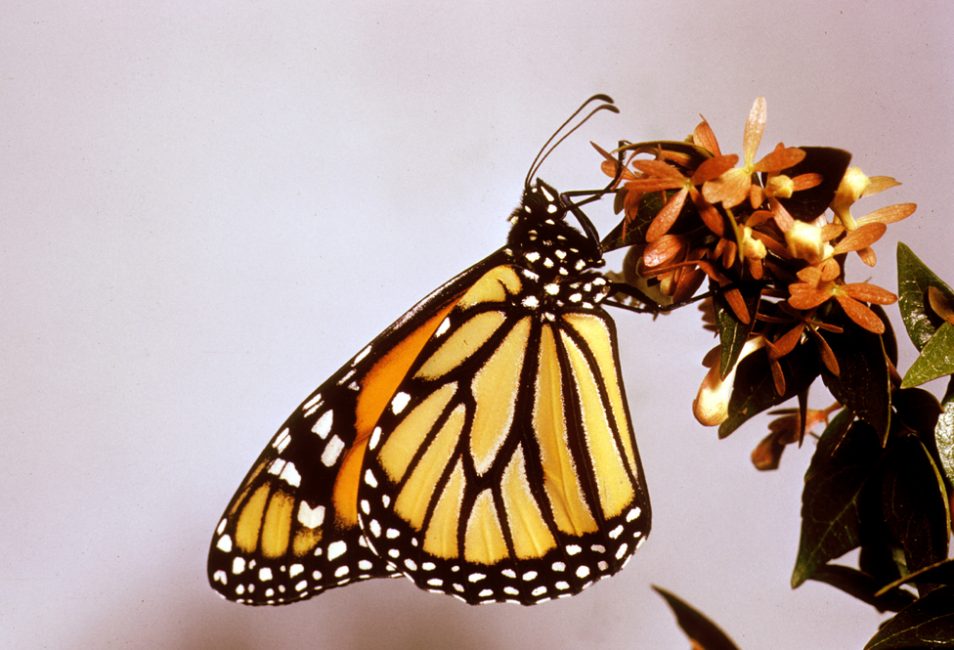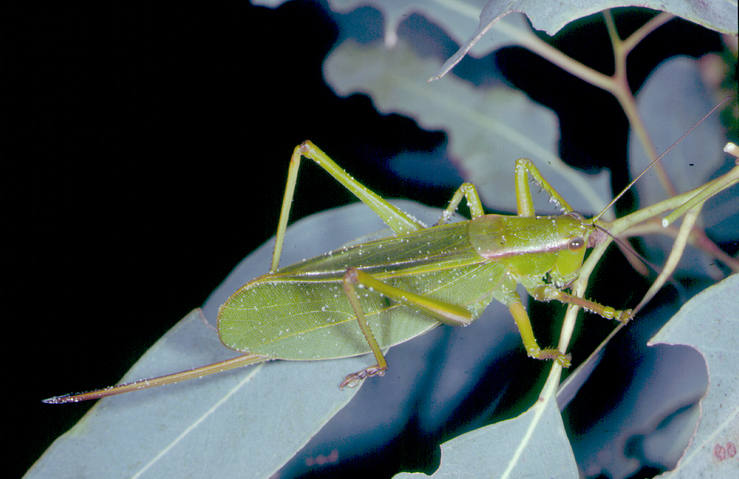
The Wanderer butterfly/Monarch butterfly. The biggest culprits of declining insect numbers are global warming and wilderness loss.
It’s been dubbed the bugalypse – study after study rolling in from countries across the globe pointing to dramatic declines in insect populations. In Germany, an 82 per cent fall in midsummer invertebrate populations across 63 nature reserves between 1990 and 2017; in the Puerto Rico rainforest, a 75 per cent reduction in the volume of insects between 1976 and 2013; in the UK, a one-third fall in the honeybee population over the past 10 years. Across the US, monarch butterfly and ladybird beetle numbers are at record lows.
In alpine NSW, there’s been a collapse in bogong moth populations, resulting in starving pygmy possums, who feed on them. Most worrying, a research review of 73 existing surveys, released last month by the University of Sydney’s Institute of Agriculture, discovered that 40 per cent of insect species will likely be in catastrophic decline within a century.
So what’s going on? Just more scary headlines, or a real indicator of an eco-crisis ahead? A bit of both. While certain “beneficial” insect populations (butterflies, grasshoppers, mayflies, dragonflies, ground beetles, fireflies) appear to be in unprecedented retreat, others considered pests and a risk to human health (tsetse flies, ticks, mosquitoes) are on the offensive again.

“To obtain a useful measure, we need to compare insect numbers today with those of 30, 40 or 50 years ago,” said Dr David Yeates.
“We’re all sure a decline is happening,” explains Dr David Yeates, director of the Australian National Insect Collection [at CSIRO] in Canberra. “But to obtain a useful measure, we need to compare insect numbers today with those of 30, 40 or 50 years ago – but invertebrate counts weren’t being done then.”
So what’s causing the bug die-off? The top culprit is likely to be wilderness loss – many insects feed off native plants, and the relentless spread of single-crop farmland and insecticides has shrivelled their range, says Yeates. Another culprit: global warming, which favours some insects over others. Cut out insects and you lose all the creatures that feed on them, including frogs, lizards and birds. Of course, a large proportion of the food we eat comes from plants pollinated by insects, and they also clean up the environment, notes Yeates. “Waking up in a world without insects would be like waking up in a garbage dump.”
Originally published in Good Weekend.


29th January 2020 at 8:10 pm
In my suburb in the outer North East of Melbourne there has been hardly any flys this summer. Hardly any bees keeping me away from the roses and the Grevillias. Possibly 3 moths seen and it’s February in a few days. This summer 2020 the drop has been huge and its all types of insects. Very scary. Taken note of the above advice.
30th December 2019 at 11:13 am
Hi,( if this is still active )
we were discussing this today, the last 10 years or so has shown huge reduction in reptile sightings locally (kuringai area), creeeks I walked 40 years ago now virtually nil water dragons, water skinks, blacks, tigers very rare. The water quality has improved, volume not sure, lately stagnant but this has been going on for a long time. if it is wilderness loss, locally these areas have really been unchanged in area and use over the period. the insects (food) have all but gone, even flies now hardly there on this morning’s walk, humid, 30 deg….
thanks in advance, happy new year 🙂
Michael
11th April 2019 at 10:15 am
Is there any evidence to support the global warming theory mentioned in this article? Surely warming, like seasonal variability, should assist insect numbers. Habitat – I agree. We need to be conserving and rehabilitating vast areas across Australia. This will also assist with carbon capture and must includes new land clearing and fire management policies.
12th April 2019 at 2:54 pm
Hi David,
Thanks for your question. We asked David Yeates and he said: Often species from temperate regions have broader thermal tolerances, and their populations may increase under warming. The much more abundant species in tropical climates tend to have narrower thermal tolerances and their populations appear to be declining. Populations of species adapted to colder conditions are also declining. In other words, warmer doesn’t mean better for all insects-it may help some temperate species increase their range and abundance.
Kind regards,
Kashmi
CSIRO Social Media Team
6th April 2019 at 8:59 am
I am a horticulturist and people need to understand that their gardens are not meant to be perfect. Stop stressing when you see a leaf that has been eaten. We need both good and bad bugs, it does all balance out. Instead of spraying use preventative methods, companion planting does work and there are many other measures you can use. I am more than happy to provide assistance if you would like to know more.
5th April 2019 at 7:38 am
We are horticulturists, over a period of about 25 years we have noticed a very significant decline in insect numbers but interestingly the rise in insect crop pest species has risen slightly both in numbers of pests and numbers of species.